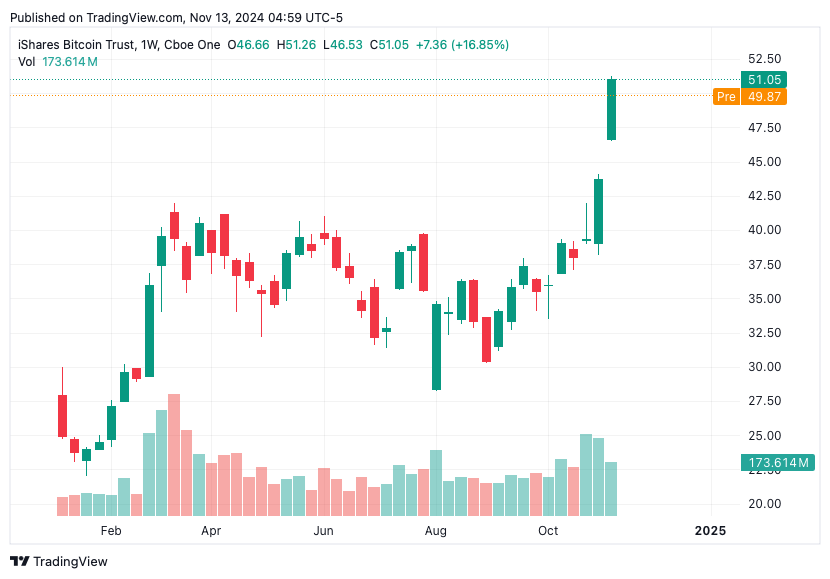Executive Summary
The cryptocurrency sector is experiencing a notable shift, marked by major institutional investment activity and significant economic policy changes. Key developments include BNB Chain’s no-code asset tokenisation service, Tesla’s substantial Bitcoin valuation, record-breaking inflows into Bitcoin ETFs, and the Federal Reserve’s recent rate cuts. Additionally, high-profile updates from Bloomberg reveal potential market changes stemming from large institutional strategies, highlighting Coinbase’s winning strategy to back crypto-friendly candidates in the recent election cycle.
This report examines these events’ implications, focusing on the integration of tokenised real-world assets (RWAs), heightened institutional involvement in Bitcoin-focused products, and how the macroeconomic environment affects the crypto landscape. Designed for institutional investors, this analysis highlights trends poised to influence financial markets and potential shifts in asset allocation strategies.
1. Coinbase’s pro-crypto candidate focus
Crypto companies, notably Coinbase, have invested heavily in supporting pro-crypto candidates. Coinbase alone contributed $75 million to political campaigns, with broader industry spending reaching over $135 million. Nearly all the supported candidates won their races, suggesting a strong alignment between political support and election outcomes. This influence could lead to more favourable regulatory structures in the U.S., potentially reducing the regulatory hurdles crypto companies face.
With the anticipated change in the SEC's leadership and a more cooperative stance from policymakers, crypto companies are hopeful for concrete regulatory frameworks. Coinbase’s Chief Policy Officer highlighted the need for clear and predictable rules, especially regarding stablecoin issuance, market structure, and commodity spot market regulation.
Key Takeaway: Regulatory clarity could stimulate both token and equity markets, as seen in the recent stock surges of crypto companies like Coinbase and MicroStrategy.
2. The Growth of Real-World Asset Tokenisation (RWA)
BNB Chain’s launch of a no-code tokenisation solution highlights a transformative move towards real-world asset tokenisation, enabling both businesses and individuals to digitise and fractionalise physical assets efficiently. This new solution aims to simplify tokenisation by offering compliance-integrated tools, reducing costs, and providing a user-friendly process that lowers entry barriers for businesses, particularly SMEs.
This innovation aligns with projections by Standard Chartered, which anticipates a $30 trillion valuation for tokenised RWAs by 2030. BNB Chain’s solution addresses critical needs for asset securitisation, making RWAs accessible to a broader pool of investors. Additionally, recent pilot programmes by the Monetary Authority of Singapore (MAS) and SWIFT underscore the growing interest in cross-border tokenisation solutions, which could open new avenues for financial institutions to adopt tokenised assets without exposure to volatile crypto markets.
Key Takeaway: The rise of tokenised RWAs presents an opportunity for institutions to access diversified investment avenues, offering liquidity and accessibility through blockchain. This $30 trillion market potential could redefine how assets are managed and transacted globally.
3. Record-Breaking Inflows in Bitcoin ETFs

Spot Bitcoin ETFs are capturing investor attention, as demonstrated by BlackRock’s record-breaking single-day inflow of $1.1 billion. Following the recent US election, total inflows across Bitcoin ETFs reached $1.36 billion, marking a historic high. This shift in sentiment has been buoyed by Bitcoin’s rising prices and increased acceptance in institutional portfolios.
The influx signals a broader trend in which Bitcoin-focused products are becoming mainstream investment vehicles for risk-averse investors. As the traditional financial sector increasingly integrates Bitcoin, ETFs facilitate safe and regulated exposure for institutions and retail investors alike. This development could also serve as a model for launching additional asset-backed ETFs, expanding the use of blockchain-based products in regulated environments.
Key Takeaway: The success of Bitcoin ETFs signifies increased institutional demand, enhancing liquidity and stabilising market perceptions of Bitcoin as a legitimate asset class. This trend could support the development of other blockchain-based financial products in traditional markets.
4. Tesla’s Strategic Bitcoin Holdings
Tesla’s decision to retain over $1 billion in Bitcoin underscores its commitment to digital asset diversification. Despite an initial sale of 75% of its holdings in 2022, the company’s recent transfer of nearly 11,500 Bitcoin to unknown wallets sparked speculation about future strategies, with some interpreting this as a potential prelude to further portfolio adjustments.
As one of the largest Bitcoin holders among public companies, Tesla’s approach exemplifies the use of crypto assets as a corporate treasury strategy. With Bitcoin prices rallying, the valuation of Tesla’s holdings has surged, reflecting both market confidence in crypto assets and the potential for institutional treasuries to benefit from digital currency exposure during market upticks.
Key Takeaway: Tesla’s crypto holdings highlight Bitcoin’s role as an asset diversification tool for corporate treasuries, providing an example for companies considering crypto as a hedge and long-term asset.
5. Federal Reserve Rate Cuts and Their Impact on Digital Assets
The Federal Reserve’s recent 25-basis-point interest rate cut, following a larger 50-basis-point cut in September, is part of a trend aimed at stimulating economic growth amid cooling inflation and a softening labour market. With the benchmark rate now at 4.50%–4.75%, institutional investors can expect reduced borrowing costs, potentially fuelling demand for high-growth sectors, including digital assets.
Historically, lower interest rates correlate with increased allocations to growth assets, as capital becomes cheaper and investors seek higher returns. Given the Fed’s projections for further cuts into 2025, the crypto market may benefit from increased capital inflows as institutions adjust their asset strategies in response to lower cost of borrowing.
Key Takeaway: The Federal Reserve’s easing policy could drive increased institutional investment in digital assets, as the lower cost of capital encourages risk tolerance and shifts funds towards high-growth sectors like crypto.
Conclusion
The convergence of institutional investments, supportive macroeconomic policies, and the growth of tokenisation signals a transformative period for the digital asset landscape. From Coinbase’s deep focus on crypto candidates to the surge in Bitcoin ETF inflows, and BNB Chain’s streamlined RWA tokenisation solutions, the environment is increasingly favourable for institutional investors seeking exposure to digital assets.
For tailored insights on how these market trends could impact your organisation, technology assessments, partnership support or token strategy consulting or educational support, please reach out today. Our research and advisory services are here to support your strategic needs in navigating the evolving crypto and financial markets.




